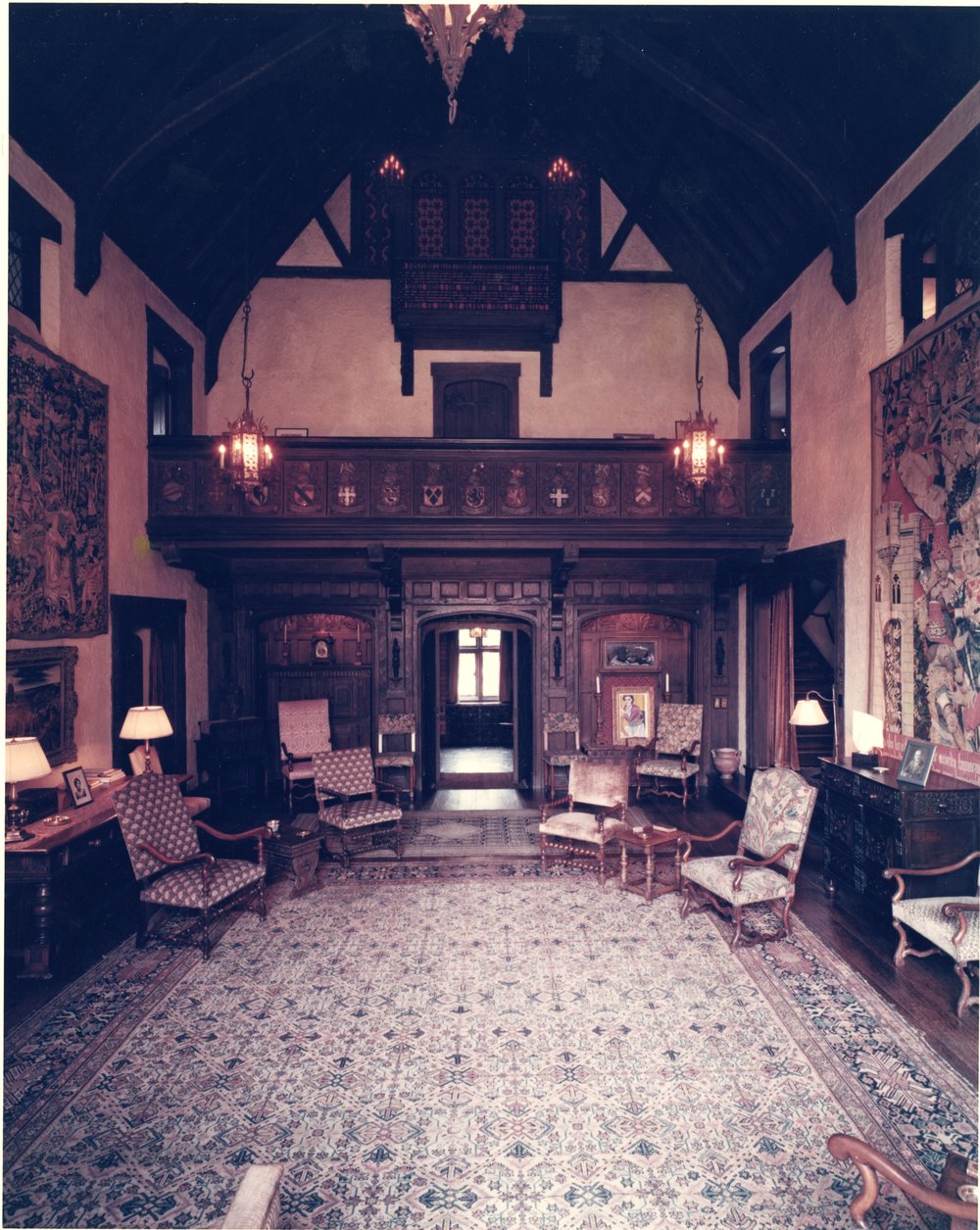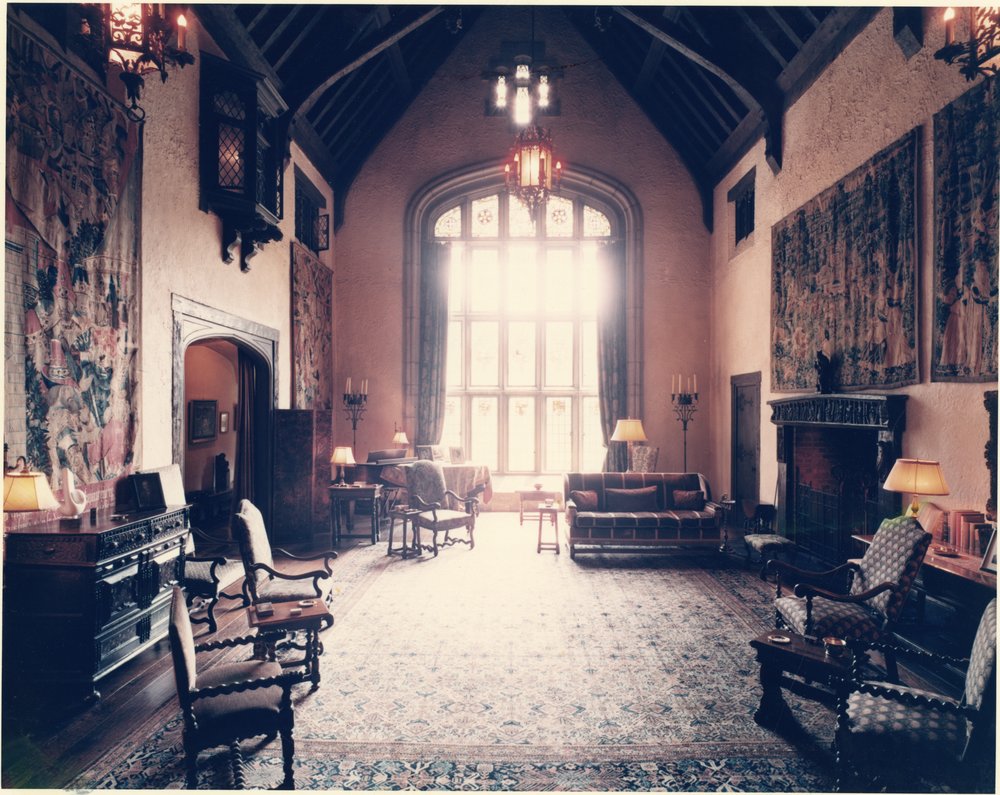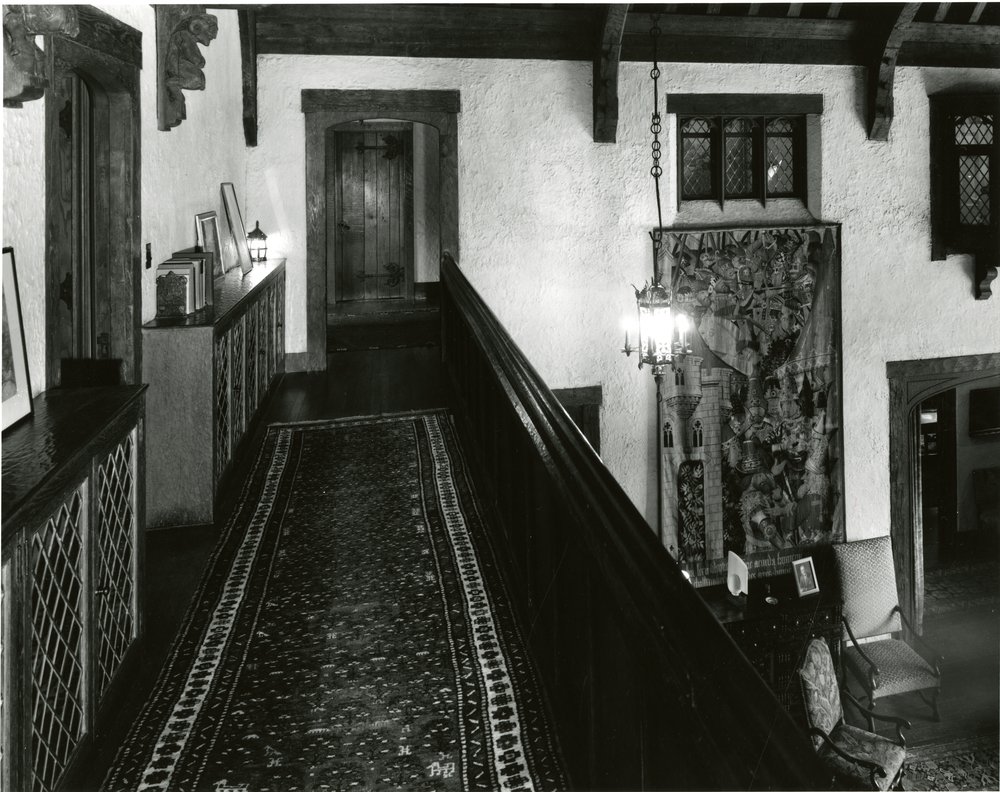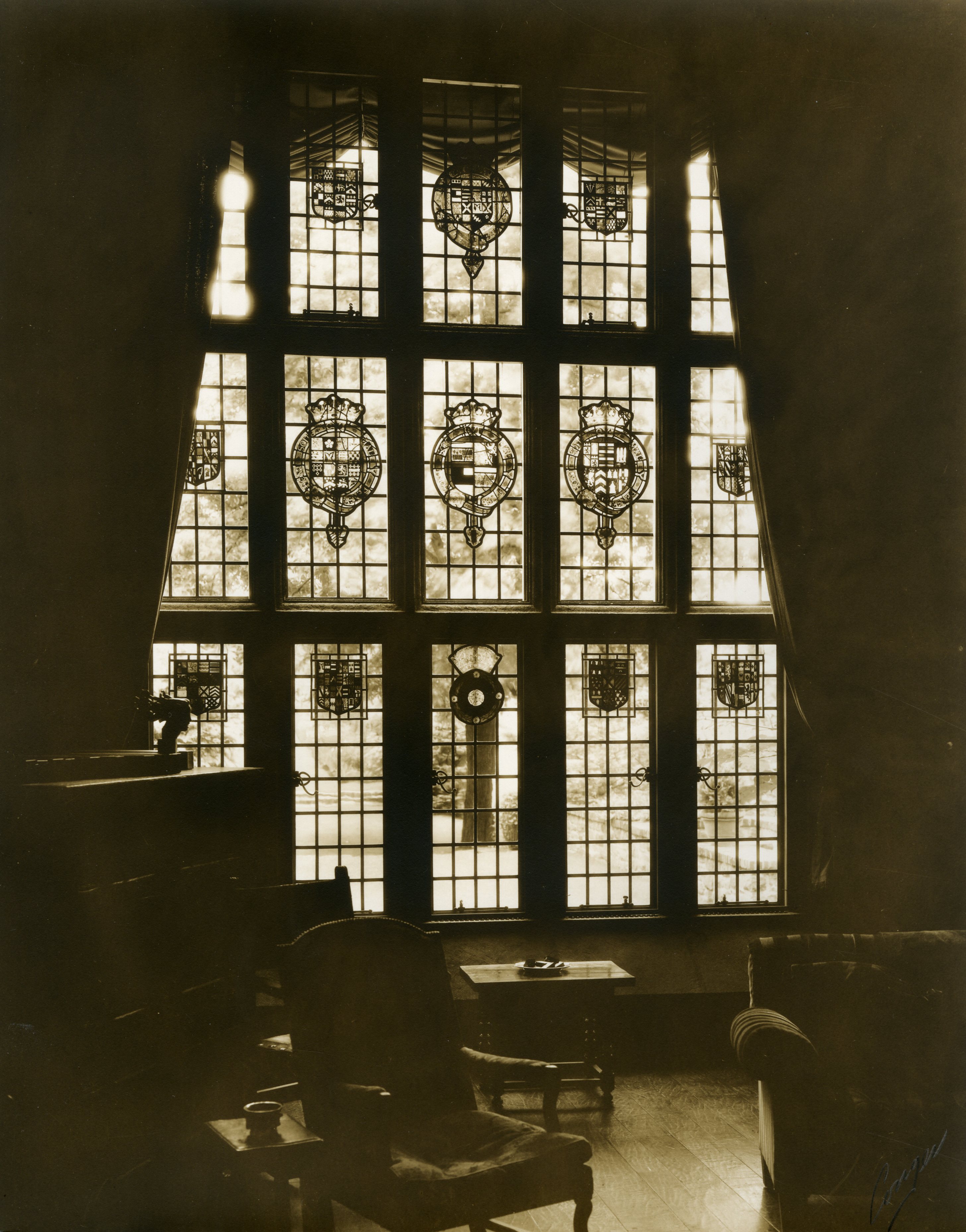The Great Hall
The Higgins House Great Hall is one of the most magnificent among all 29 rooms. It measures 36 by 22 feet with a 36-ft-high pitched wooden board and exposed beam ceiling. On one end of this architectural masterpiece is a three-story arched window overlooking the gardens; on the other is a balcony and organ loft mounted high above the main floor. Open, spacious, and flooded with natural light, the Great Hall served as a central gathering place for many Higgins-hosted functions--and remains as such today for special WPI events.
In addition to its magnificent panoramas, the Great Hall boasts several intricate features. Highlighted below are three of these outstanding trademarks, including an inside look at the Higgins as hosts.
The Great Hall Coats of Arms
Installed on the face of the Great Hall balcony are several panels representing the coats of arms of all former owners of the land upon which Aldus C. Higgins built this castle-like home. There are 15 in all, from the earliest Indigenous occupants to the Higgins' themselves. Each is hand-carved and hand-painted. See images of the finished panels below, along with a selection of crest clippings from Aldus C. Higgins' research into the matter.


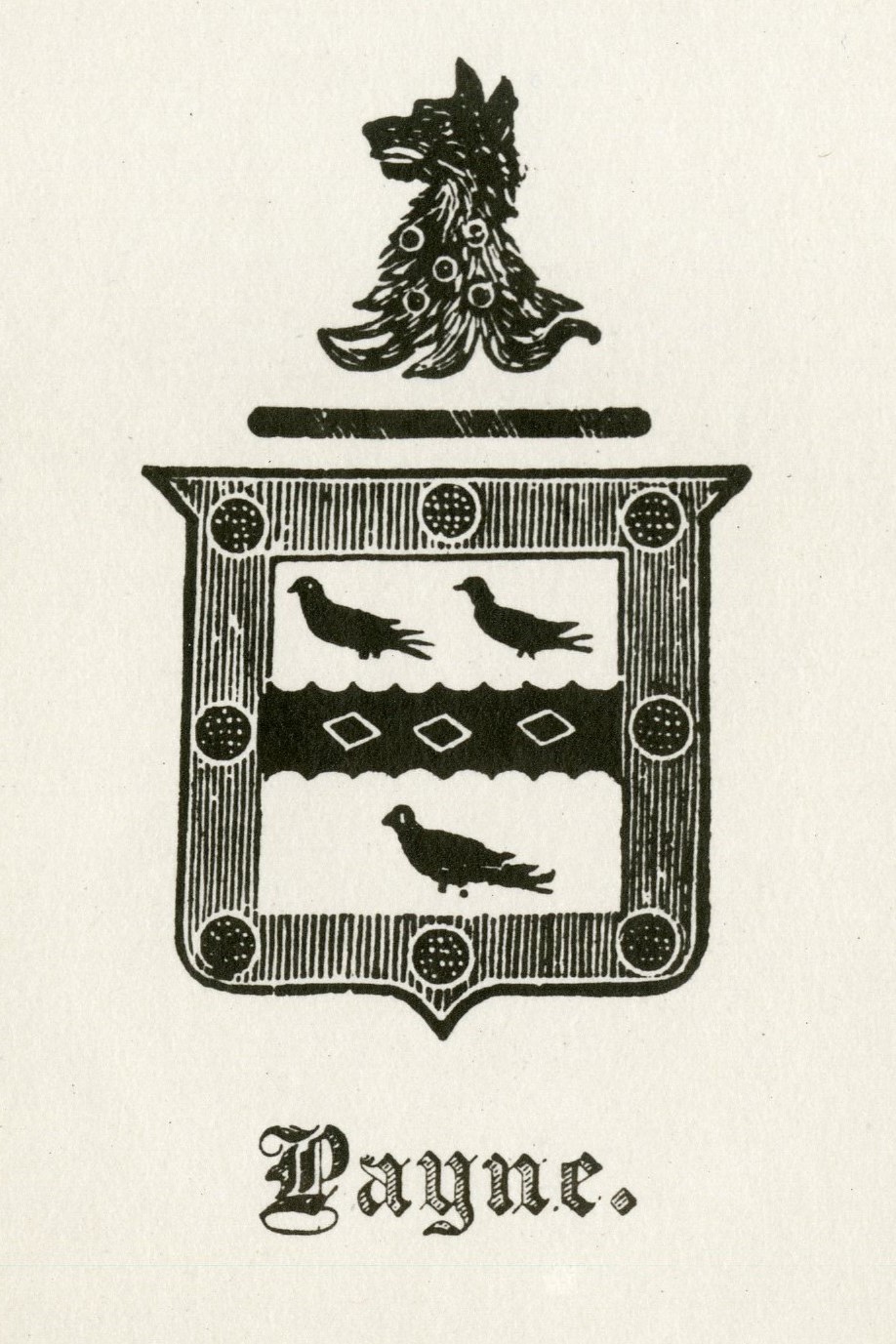
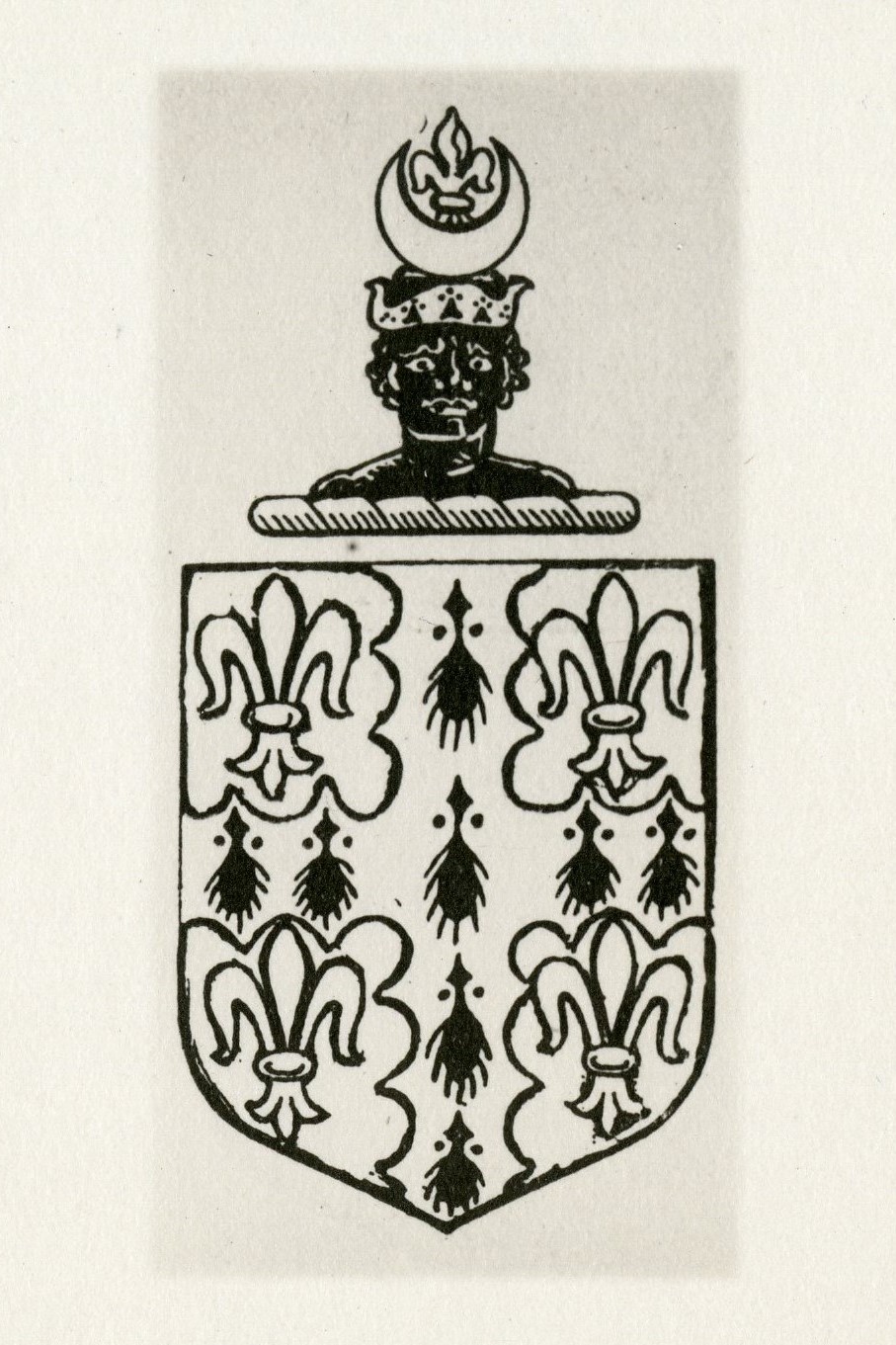


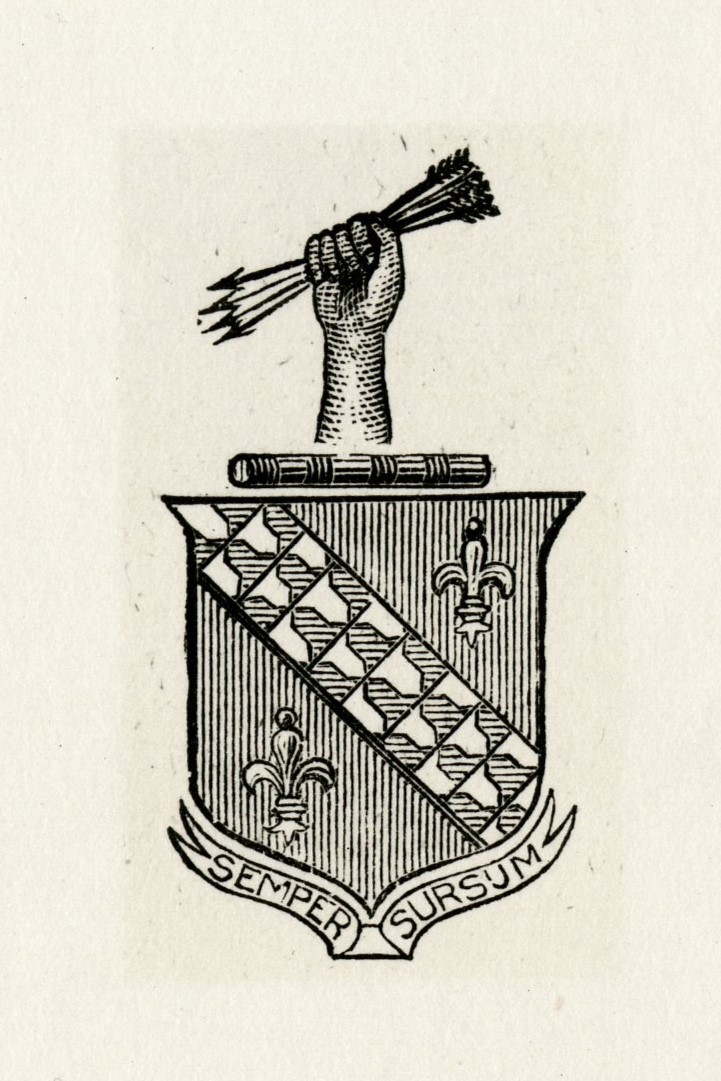
The Aeolian Organ & Fireplace
With its three-tiered console, the aeolian organ in the Great Hall was a premier source of enjoyment to Aldus--though he did not play himself. Its music was played with rolls. The uppermost balcony behind which the pipes were installed is decorated with an ironwork pattern of musical score and the words, "Pastime with good company I love and shall until I die, grudge who will but none deny, so God be pleased this life will I."
After Aldus' death in 1948, Mary (no longer having need for the organ) donated it to Saint Joseph's Abbey in Spencer, Mass.
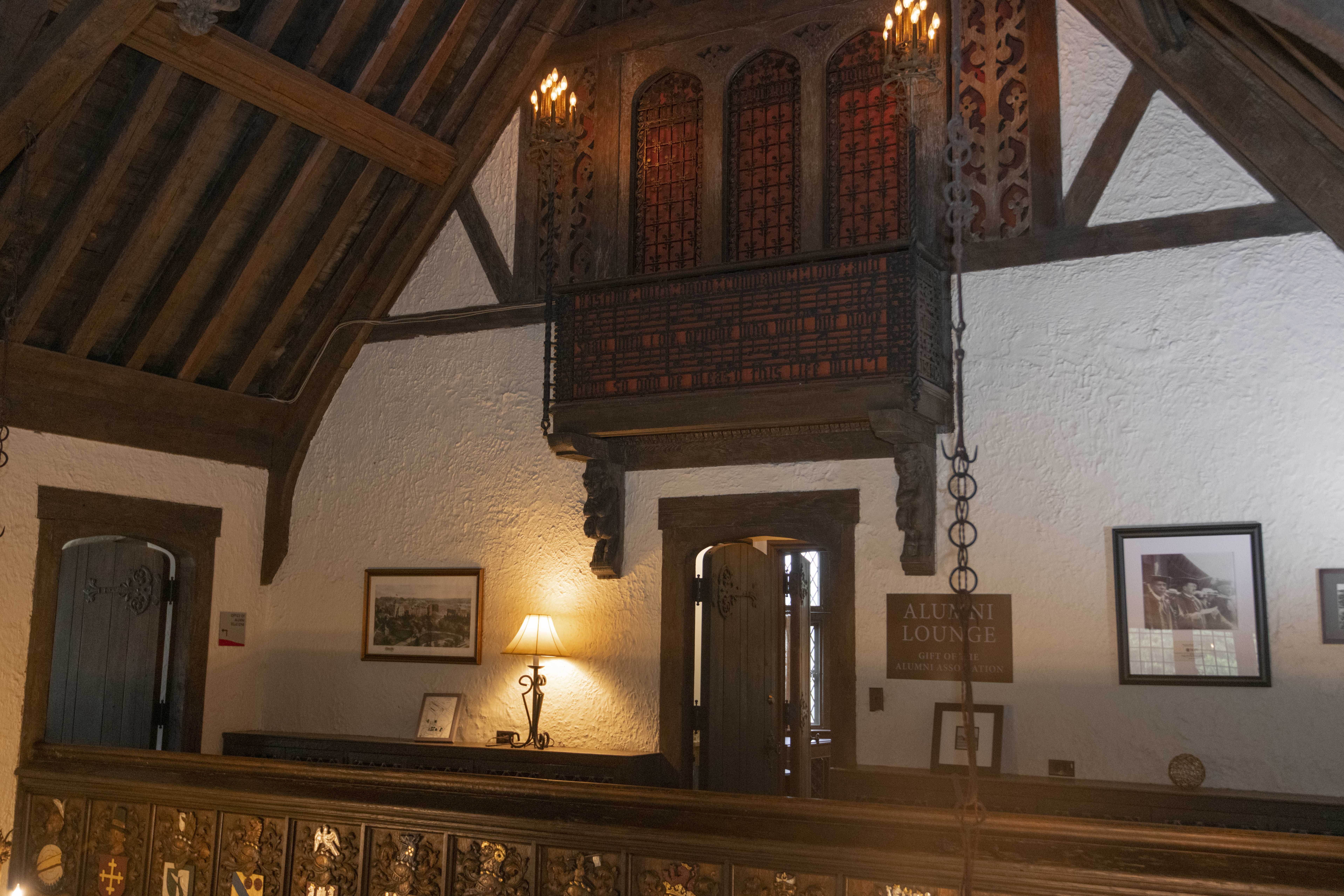

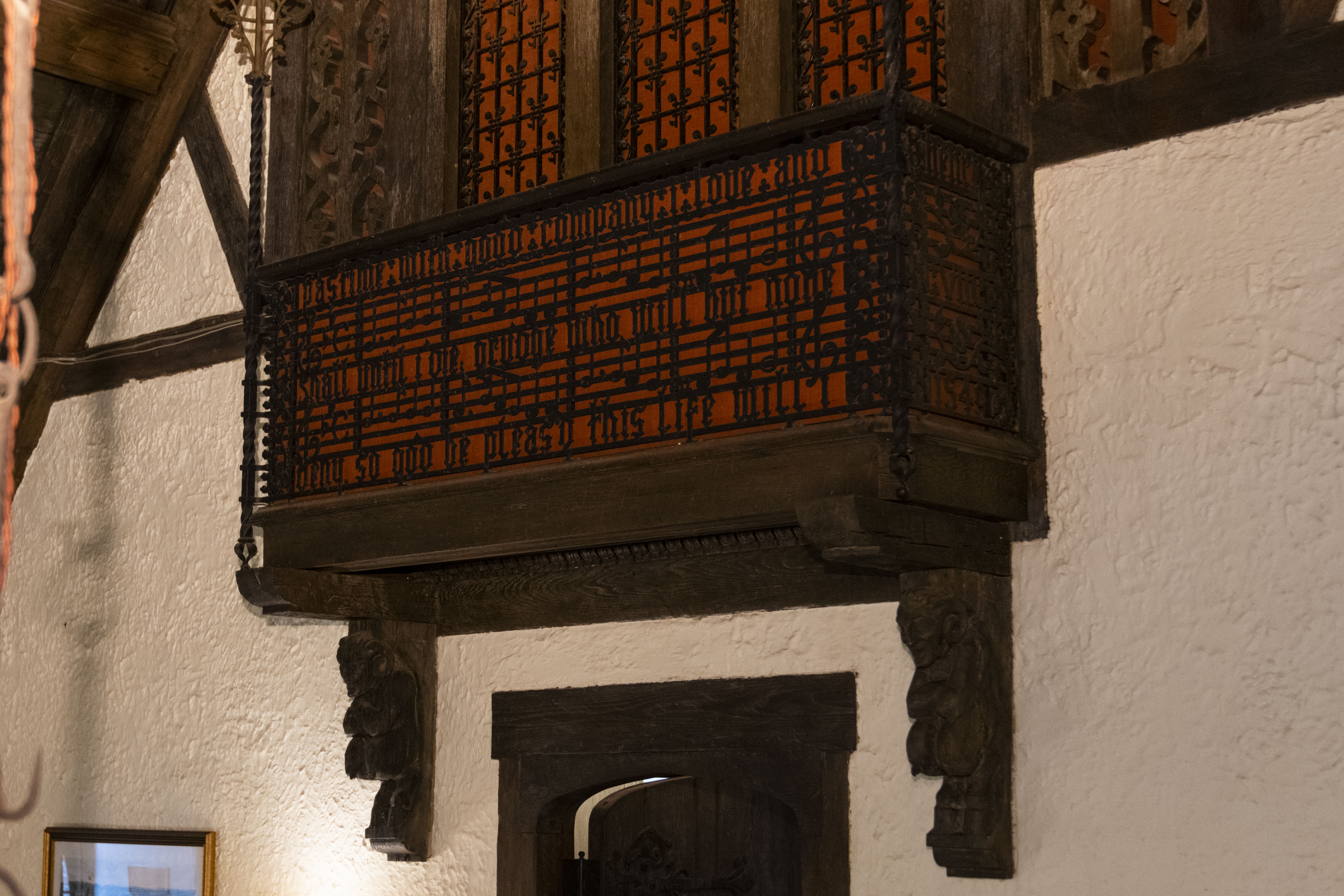
The Great Hall's fireplace is yet another outstanding architectural feature of this magnificent space. Its mantel was carved from a roof section of an Italian monastery and is large enough to burn a six-foot length of timber.
The Higgins as Hosts
As the Higgins House was such a wonderful place to entertain, Aldus and Mary often hosted parties for their Worcester friends. The Great Hall, of course, served as the central gathering place for these special events. One of the most popular parties was inspired by Aldus' admiration for paintings, collections of which (including works by Pablo Picasso and Paul Cezanne) were hung on the third floor. On these special occasions, guests were only allowed in if accompanied by an original painting of their own, all of which would be hung for viewing as the main event. A prize was awarded to the best. Learn more about the influence the Higgins' regard for hospitality had on the house's architectural and interior design in the next section, which goes into detail about Mrs. Higgins' private suite.
More Architectural Feature Pages
Back

